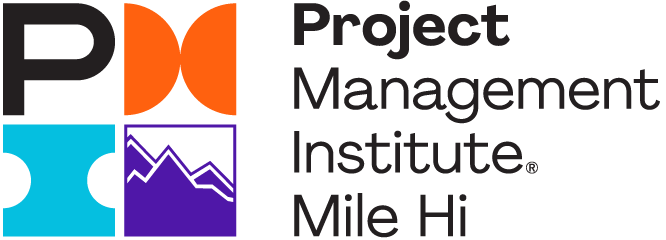18 February 2021 at 04:25PM
Strategic Stakeholder Engagement
The Standard Stakeholder Engagement Toolkit
The practices of stakeholder engagement, previously known to PMI members as stakeholder management, are well defined. Templates and tools are readily available. Project management software suites have features and modules well fitted to the task. Dedicated stand-alone platforms are available for projects of any scale.
Summarizing the practice as a whole could be useful but that exercise has been done before. Listing my favorite platforms and tools is tempting but might only apply to my particular approach and preferences.
So this blog post focuses why stakeholder engagement efforts stutter, stall, or are abandoned completely. Why is it that with all the information and tools available to us, it’s still so hard to capture the attention of our internal, extended, and external stakeholders through a project lifecycle?
Overwhelming. Underperforming.
I do not believe that primary sources of failure can be found in individual tools or practices. Established standards are standard for a reason. They are valuable exercises that apply to a broad range of use cases. Neither is the root of our trouble found in technological or systemic issues. Most platforms, especially those designed for the task, have all the features and functions we need. The mechanics of stakeholder engagement are not inherently complicated.
Another commonly cited cause of failure is the personal investment or interest level of stakeholders themselves. Have you ever encountered a version of ‘They aren’t interested’, ‘They don’t care’, or ‘They’re too busy’? Common exercises explore this very problem, mapping stakeholders ‘Power vs. Interest’ or ‘Interest vs. Influence’ across Cartesian grids.
My personal theory is that general stakeholder disengagement, and therefore engagement failure, is not caused by lack of effort, information, or interest but by excess of irrelevant information. Specifically, I believe that excess irrelevant information distracts and overwhelms individual stakeholders to the point where they cannot effectively influence the project or engage with the project team.
While the project manager’s attention is often spread thinly across many projects, systems, and tools, the stakeholders’ attention is often spread thinly across many communication channels, calendars booked with many weekly-update meetings, and a bookmark bar stuffed with documents, intranet sites, and dashboards.
Failure doesn’t come from lack of knowledge or lack of tools, it comes from lack of focus.
Thinking Strategically about Stakeholders
In a world with unlimited time, money, and attention there would be no need to think strategically. In our world broadly, and in the world of a Project Manager specifically, the allocation of limited resources for maximum results is a primary concern. Therefore, thinking strategically about how we spend our time budget and how we spend our stakeholders’ attention budget is a primary concern.
The most concise academic explanation for strategic thinking that I have found comes from Good Strategy Bad Strategy: The Difference and Why It Matters by Richard Rumelt. He describes three elements that make up the kernel of a good strategy:
- The Diagnosis - What is really happening here?
- The Guiding Policy - How do we make decisions in this area?
- Coherent Action - What do we do about it?
Rumelt acknowledges the simplicity of this model compared to the more in-depth strategic planning processes, stating that…
“Good strategy almost always looks this simple and obvious and does not take a thick deck of PowerPoint slides to explain. It does not pop out of some “strategic management” tool, matrix, chart, triangle, or fill-in-the-blanks scheme. Instead, a talented leader identifies the one or two critical issues in the situation—the pivot points that can multiply the effectiveness of effort—and then focuses and concentrates action and resources on them.”
~ Richard Rumelt, Good Strategy Bad Strategy: The Difference and Why It Matters, loc. 247
Let’s take a closer look at strategy as applied to project stakeholders. Each internal, extended, and external stakeholder has some pivot point that constitutes their core concern for the project. Each stakeholder also has one or two (no more than a few) levers, with which their position, profession, perspective, or investment can be best used to deliver on the project goals.
Our job as builders and maintainers of project environments is to identify these core concerns and give each stakeholder the information they need to know and the agency to do what they need to do. If we can do this without burning attention budget on extraneous information, we can maintain maximum traction and engagement.
Strategic Engagement in Practice
So the theory sounds great but how do we make it work? Let’s apply strategic thinking to the standard tools and practices.
For each stakeholder on the register, do you know what their core concern is? What are their primary levers? What they need to know and do within the evolving project environment? The best way to answer these questions are exploratory 1:1s or small group sessions. Resulting examples will look something like:
- Financial Stakeholders - We need to know if the project spend will go over this quarter or come in under. If it’s over, we’ll allocate more funds. If under, we’ll earmark the balance for other projects.
- Marketing Extended Team - We need to know if the launch date is stable, delayed, or at risk of delay. We’ll keep the same launch announcements if stable, push them out if delayed, or publish a teaser if at risk.
- IT Management - I need to know if the right resources are allocated. We can add or reassign developers but two weeks’ notice is ideal.
- Local Government - We need to process any new permits four weeks in advance or changes to existing permits two weeks in advance. Give us a list of potential changes so that we can plan ahead.
There are as many examples as there are project and stakeholder combinations, but you will notice that each of these examples has a specific type of information, a specific timeframe, and a specific action. Therefore, the key to engagement is providing exactly the information needed, in a single location, without excess clutter.
Consider the actions we take every day, based on information at our fingertips:
- Check the Weather - ‘I can see that it’s going to be cold. I’ll wear a hat.’ Or ‘I can see it’s going to rain. I’ll bring a jacket.
- Check a Stock Price - ‘We’re trending up. I’ll hold.’ or ‘It’s dipping down. I’ll put in a buy order.’
- Check Driving Directions - ‘Looks like there’s construction on the tollway. I’ll take another route.’
If our project stakeholders have a single URL that condenses the data relevant to their core concern, they can check it and take action, just as they would check the weather. The industry default seems to be providing all information to everyone in project update meetings or comprehensive dashboards, then relying on individuals to filter out the noise and find information relevant to their core concern. With stakeholder-specific links and communication, they can see what they need first, then look around for more information if needed.
If we can build the information each stakeholder needs to know and deliver that along with the actions they need to take, we can make stakeholder engagement a frictionless process.
What’s Next?
During the PMI Mile Hi Virtual Roundtable, on February 24th, 2021, a lively group discussed the topic of strategic stakeholder engagement and exchanged some ideas on real-life examples as well as some tips and tricks. If you couldn't make it, connect with J. Deckert on LinkedIn, and ask for a copy of some of those examples.If you have some additional ideas, feel free to comment here on this blog post.
Additional Resources
Interested in learning more about topics like this one? Check out upcoming events on our chapter calendar. Sign up for one of our upcoming meetings, roundtables, or workshops – a selection of which are virtual. Earn your PDUs through PMI Mile Hi Chapter!
About the Author

J. Deckert manages a consulting team specializing in complex, multi-party projects and platform implementations. He partners with businesses to develop collaborative working practices, plan strategically, and simplify then systematize processes. A PMP since 2011, J. focuses on bridging the gap between enterprise level strategic planning and ‘boots on the ground’ project management.



